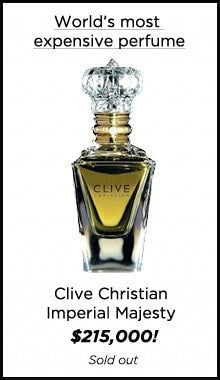Fragrance Blog
What's in your fragrance

Ever wondered what’s in your fragrance, that makes it what it is? Each fragrance will consist of water, preservatives, alcohol, oils and extracts. The different blends of oils and other ingredients results in the vast variety of cologne available today. Your fragrance is created when oils and extracts mix up with your own bodily oils and heat pattern.
The lasting power and strength of colognes form the different kinds available. It generally last longer when there is a higher concentration of aromatic compounds.
Types
Eau de Cologne: this has about 3 to 7% of aromatic compounds: meaning that the concentrated perfume is not as light as this. When put in applied in hot weather, it is very delightfully and refreshing; however, it can only last for a short period of time. Because of this, you can apply it to the skin directly. It usually comes in larger bottles of up to 200 ml and is mostly in a spray container. Most colognes have a duration of 2 to 3 hours.
Eau de Toilette: the aromatic compound content is between 7-12%. It is more concentrated than the Eau de Cologne. It has dominant top notes which make it refreshing and vibrant when used, and can last up to 2 to 4 hours.
Eau de Perfume (Parfum): the aromatic compound content is between 10-20 percent. It is more concentrated and last longer than the previous two. The heart notes or middle note of the perfume is noticed after the top note fades away. It can last for up to 3 – 5 hours and is cheaper than perfume extracts since it doesn’t last as long.
Perfume (Parfum): the aromatic compound content is above 20 percent. It is the most expensive fragrance because it has a very high concentration of essences. It can be applied to the skin directly. It comes in small containers and only very little quantities are needed when being used. It can last for up to 6 hours when applied. Parfums are usually sold in small sizes.
Categories
The floral consists of scents of flowers like orchid, lilac, honeysuckle, jasmine, and gardenia. Soft floral consists of aldehydes like cinnanaldehyde, which offers the aroma and color to cinnamon. It is also made of powders or soft notes like amber powder, Moroccan jasmine and Russian rose. The Floral oriental consists of sweet spices and orange blossoms.
Oriental: its sub groups include woody oriental, oriental and soft oriental. The soft oriental has to do with amber and incense, while the oriental has to do with vanilla, musks and oriental resins. Aromatic woods such as patchouli and sandalwood are contained in the woody Oriental group.
Fresh: this group contains water, green, fruity and citrus. Orange oils, lime and lemon are part of the citrus group. Just as the name “fruity” sounds, it has strawberry, banana, raspberry, and tangerine fragrances. Green on the other hand has grass or leaf smell while the chemical called calone is used in water. This fragrance smells like sea breeze with a little addition of floral scent.
Woody: dry woods, mossy woods and wood are the subgroups under this. Aromatic woods such as cedar, myrrh and frankincense are all contained in the wood group. The mossy woods on the other hand, make use of fragrances like oak moss while the dry woods have leather and tobacco fragrance.
Fragrance Notes
A progression sequence is followed by most cologne. The top notes can only last for a few minutes, the heart notes last a little longer (up to 1 hour) while the base notes can last more than 1 hour. The difference in volatility of the essential oils accounts for this variation.
Top or Head Notes: they are made of light, small molecules that that evaporate quickly and they can be perceived immediately when they are applied. The first impression a person will have about a perfume is determined by this note and as such is vital in perfume sales. Its smell is usually regarded as sharp, assertive or fresh. Very volatile scents that can evaporate quickly contribute to the powerful scent of the top notes. Very popular top note scents include ginger and citrus. If fragrances were t be likened to a discussion, the top notes will be regarded as the introduction and presentation.
Middle or Heart Notes: this refers to that scent which is perceived almost immediately before the top notes completely evaporate. It could be perceived as early as 2 minutes after perfume application or up to 1 hour after the application of a perfume. This note makes up the main body or heart of the perfume and can be perceived in the middle stages of the dispersion process of the perfume. The scents of the middle notes are usually more rounded and mellow because they tend to cover the common displeasing first impression of base notes that gets more pleasant with time. Also known as the heart notes.
Base: this refers to the scent perceived when the middle note is about to completely dissipate. They are usually perceived about 30 minutes after usage of the perfume the main them of the perfume is the base note along with the middle note. This note offers solidity and depth to a perfume. Fixatives usually utilized to hold and boost the solidity of the middle and top notes are often contained in the compounds of this note. Meaning they are made of molecules that are deep and rich and evaporate slowly. A variety of tree species are combined to form base notes. Examples include cinnamon, ok, sandalwood, birch etc. the different parts of the tree can be used; it all depends on the specie. The wood in itself can be used; the sap or bark could also be used.
Now that you know the key components of a fragrance, find out what notes are the strongest in your fragrance and enjoy them even more!






bfAcvjxrNpX
OoZcqyeuWgfGxlpr
gWlEMQhd
MshJGNba
xVtUEogPrd